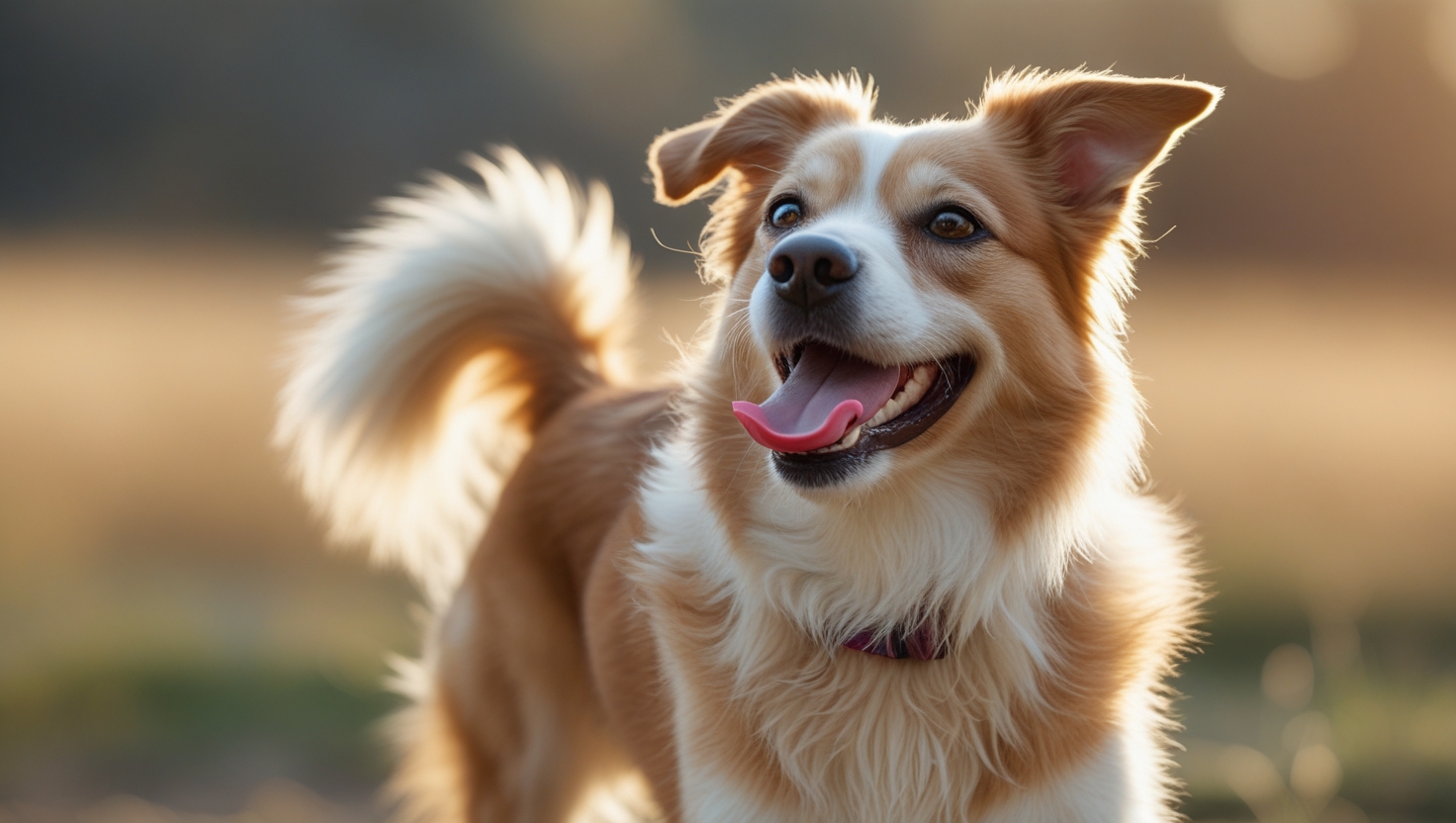Dog Licking Tail Excessively
Excessive tail licking in dogs may result from fleas, allergies, anal gland issues, or behavioral stress. Identifying the cause, consulting a vet, and using appropriate treatments like medications or lifestyle changes can effectively resolve the issue and ensure your dog’s comfort.

Possible Causes of Excessive Tail Licking
Excessive tail licking in dogs can be caused by various physical, environmental, and behavioral factors. A dog might focus on its tail, base, or surrounding areas due to itching, irritation, or discomfort. Below are some common reasons behind this behavior:
- Fleas: Tiny wingless insects often bite the skin, causing intense itching, scratching, chewing, and licking. Flea dirt (tiny black or brown specks) may be visible, and allergic reactions, such as Flea Allergy Dermatitis (FAD), can lead to red patches, scabs, and hair loss. Topical treatments, collars, chewable tablets, or medicated baths can help, alongside vacuuming and washing bedding in hot water to eliminate eggs, larvae, and pupae.
- Anal Gland Issues: Overfilled or impacted anal glands may create a fishy odor and cause licking, biting, or scooting. Dogs may experience pain, swelling, and inflammation in the hind end, especially near the tail base. A veterinarian can perform manual expression or use antibiotics, anti-inflammatory medication, warm compresses, or fiber supplements (like pumpkin) for treatment.
- Allergies: Environmental allergens like pollens, grasses, and dusts or food allergies can lead to scratching, licking, sneezing, watery eyes, and red skin spots. Dogs with contact dermatitis might develop irritation on their abdomen, feet, or tail base. Treatments include hypoallergenic diets, antihistamines, shampoos, and allergy shots under veterinary guidance.
- Parasites and Worms: Dogs licking their tail and hind areas might have tapeworms or roundworms. Fecal samples, dewormers, and proper hygiene are essential to control infestations caused by ingesting wildlife feces or contaminated environments.
- Hormonal Imbalances: Conditions like Cushing’s disease or hypothyroidism can cause coat thinning, hair loss, rough skin, and licking behaviors. Other symptoms include increased thirst, urination, lethargy, and appetite changes. Diagnostic tests (e.g., bloodwork, ultrasounds) and treatments are necessary for management.
- Behavioral Issues: Anxiety, boredom, or stress may trigger repetitive licking. Dogs may display restlessness, pacing, destructive chewing, or whining alongside licking. Engaging the dog with exercise, toys, or calming massages and consulting a veterinarian for medications can alleviate stress.
Symptoms and Conditions Associated with Tail Licking
When a dog is licking its tail excessively, it might be reacting to pain, irritation, or discomfort. Common signs include wounds, abrasions, swelling, or bumps near the tail. Some dogs develop hot spots, dermatitis, or hair loss due to allergies or insect bites that lead to inflammation of microscopic cells in the skin. If the tail is low, limp, or painful when touched, there may be trauma, bruising, fractures, or nerve injuries caused by hitting doors or wagging too hard. Lacerations, discoloration, and scabbing may also occur, requiring cleaning with soap, water, or antiseptic solutions and treatment with topical medications, antibiotics, or anti-itch products.
In some cases, firm or fluid masses, growths, or cysts may appear, ranging from benign to malignant tumors, diagnosed through needle samples. Other issues like perianal itching from glands or hormonal imbalances can lead to irritation, especially in breeds like German Shepherds or Great Danes. Severe injuries like degloving, avulsion, or fractures might even require amputation, bandaging, or therapy if they affect muscle, bone, or nerves, sometimes leading to urination or defecation problems. Early diagnosis, testing, and prevention are key to managing these symptoms effectively.
Types of Injuries and Conditions Affecting the Tail
Excessive licking or chewing of the tail in dogs can point to various injuries or conditions that need attention. Some of these include:
- Happy Tail Injuries: Dogs with vigorous wagging, especially in confined spaces like cages or crates, may hit their tails against walls, tables, or chairs, causing superficial or deep wounds that may bleed and become painful or chronic without bandaging or medical management.
- Swimmer’s Tail or Limber Tail: Overuse of tail muscles due to excessive activity, straining, or prolonged sitting/standing can leave the tail limp or drooping. This condition might require rest, anti-inflammatory medications, and monitoring to avoid relapse.
- Fractures and Nerve Damage: Trauma such as pulling, avulsion, or impact can lead to fractures, nerve stretching, or even incontinence affecting urination and defecation. Severe cases might require x-rays, pain medication, or, in extreme situations, surgical amputation.
- Hot Spots and Dermatitis: Flea-based or food-based allergies may cause itchiness, bald spots, irritation, and moist, inflamed patches on the tail base or tip. Shampoos, antiseptic solutions, and allergy management can help soothe these areas.
- Neurologic and Degenerative Conditions: Disorders like degenerative myelopathy or nerve malfunctions can lead to pins and needles, hair loss, and irreversible tail damage that impacts overall movement.
Behavioral and Case-Specific Insights
Luke, a German Shorthair Pointer, might start licking his tail base excessively for many reasons, often driven by behavior or underlying health problems. When my family and I noticed our dog doing this, we immediately consulted a veterinarian to uncover possible secondary causes. The vet explained that incessant licking could be linked to fleas, ticks, or even tapeworms, as sniffing and ingesting contaminated hair or debris during hikes might lead to fecal tests revealing such parasites. Regular prevention, such as using proper medication and vacuuming the house, was emphasized to maintain a happy, healthy pet.
Our mom and dad took turns monitoring him, especially since we had just returned from a vacation, where a pet sitter overlooked his care routine. While chewing and licking behavior persisted, the vet advised clear instructions on redirecting his focus with positive reinforcement, like offering cookies. This approach, paired with ensuring he was comfortable and free of irritation, worked wonders. It’s also worth noting that hikers with dogs should regularly inspect their pets for ticks after trips. As a dedicated advocate for canine well-being, I always remind pet owners to use every resource available to avoid such issues.
When to Seek Veterinary Care and Immediate Actions
If your canine is excessively licking their tail and showing signs like bleeding, swelling, or red, inflamed skin, it’s essential to act quickly. Our dog once had a laceration near his tail that became worse due to constant chewing and self-grooming. This led to pain, panting, and pacing as he struggled to get comfortable. When we noticed hair loss and a lump forming, we immediately consulted a veterinarian, who ran proper tests to identify the issue.
The vet found a growth with fluid that required drainage and noted possible intestinal upset from swallowing fur during licking. Using a vet-approved zinc cream and cod liver oil, along with changing his routine to include hypoallergenic shampoo and regular brushing, helped promote healing. To prevent toxicity or a drug interaction, always seek approval before using any medications or home remedies. Early care can prevent severe issues like a fracture, vomiting, or diarrhea from developing into bigger concerns.
Kindly note: The content shared in this blog is gathered from online sources, some of which may not be verified. For accurate guidance on caring for your dog, it is recommended to seek advice from a qualified veterinarian.

